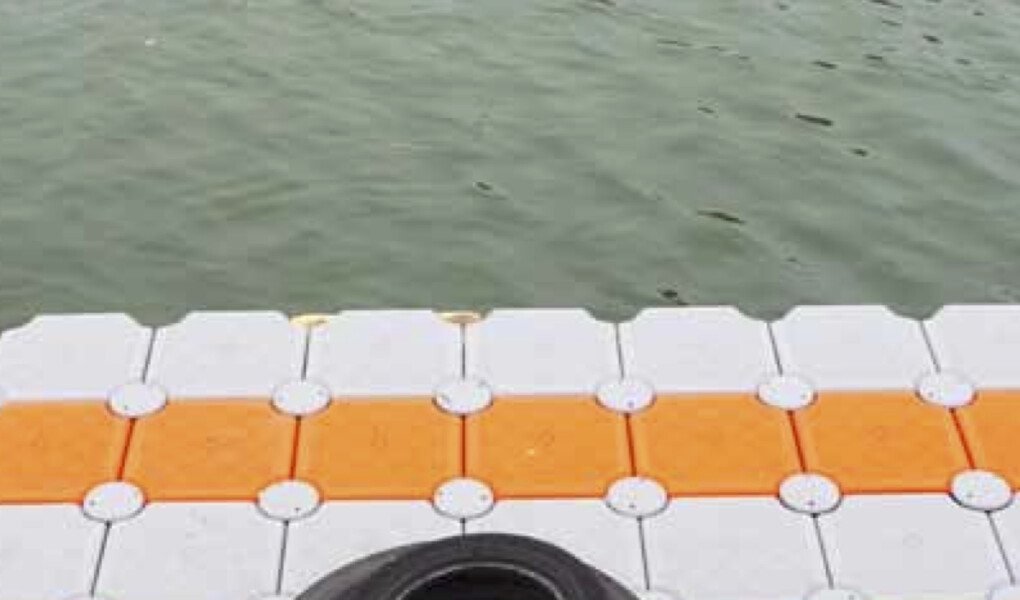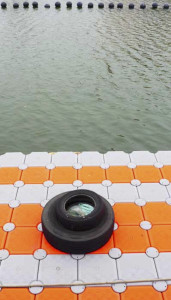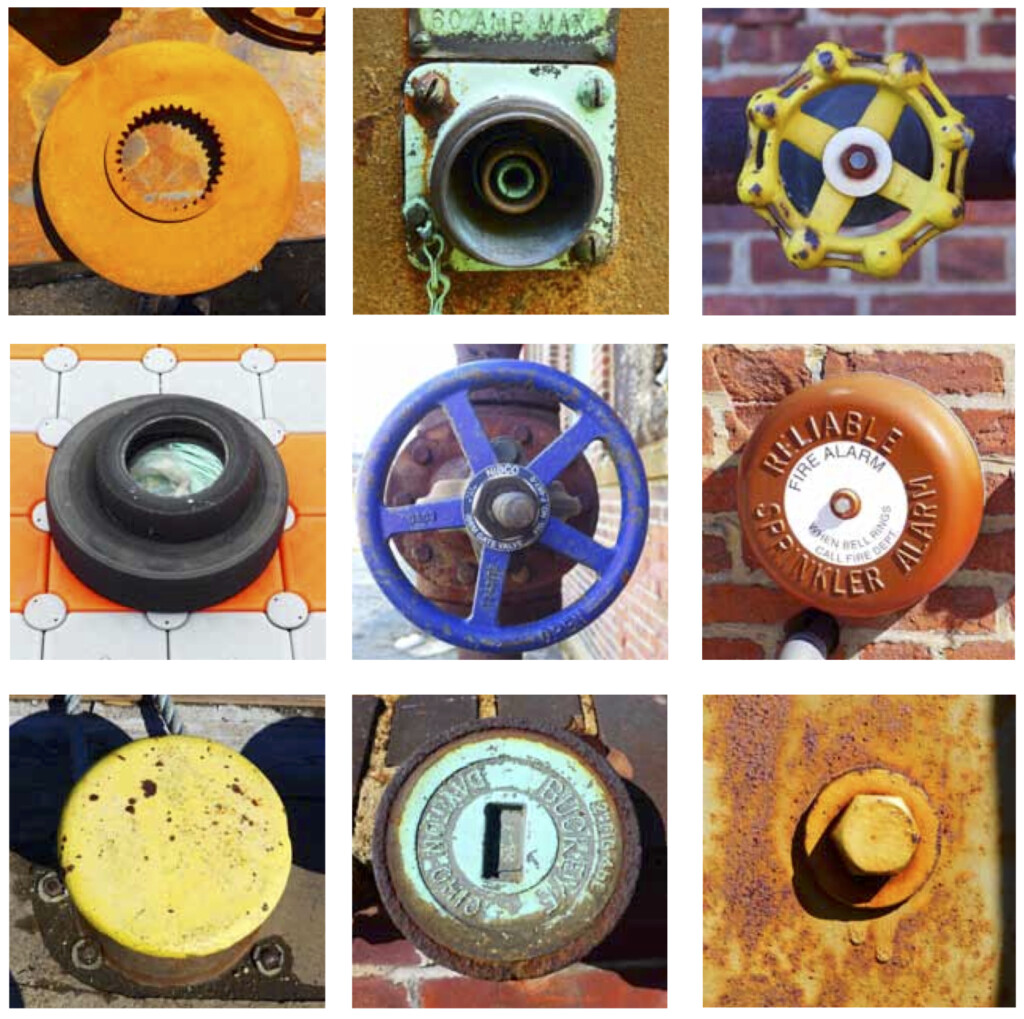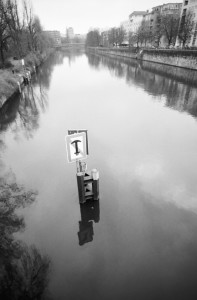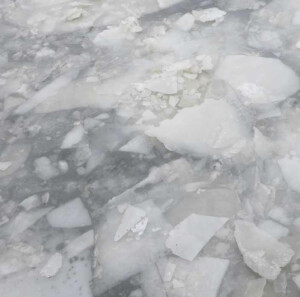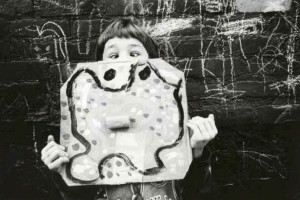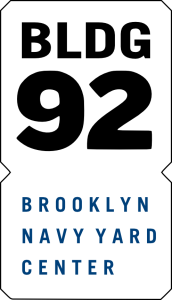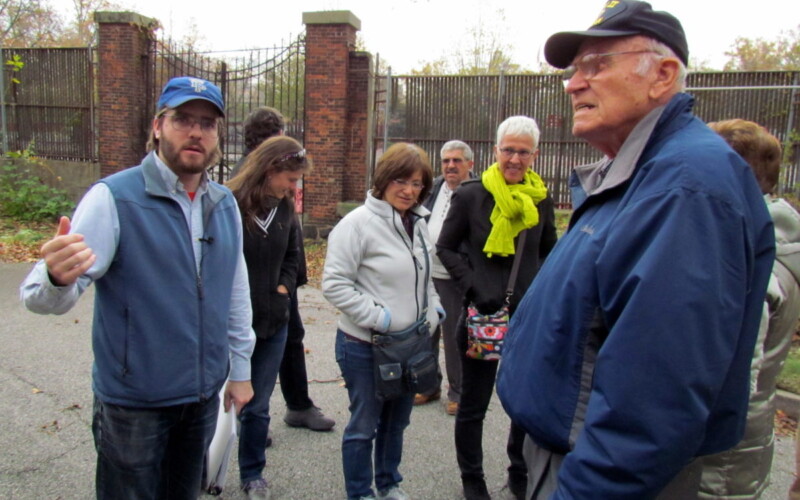Our next Seasonal Photography Tour of the Brooklyn Navy Yard is just a few days away (Saturday, April 19, 11am-1pm – tickets are almost sold out!), and we are pleased to announce the photo contest judge for the spring installment. Graphic designer and photographer Theresa Fitzgerald is currently a BLDG 92 Visiting Artist, and for the past several months, she has been exploring the historical fabric and contemporary reinvention of the Yard with her partner, fellow photographer Doug Keljikian. The two of them recently spoke with our blog editor Andrew Gustafson to discuss their work and careers, and what inspires them in the Brooklyn Navy Yard.
– – –
First off, where are you from, and what drew you to the Brooklyn Navy Yard?
Theresa Fitzgerald: I grew up in Upstate New York, outside of Utica, and I’ve been in the city close to 30 years now. So I’m definitely a New Yorker. I’ve lived in Brooklyn much of the last 25 years, and we recently moved to Clinton Hill. I’ve just fallen in love with the Navy Yard – I find the past so interesting, and the future so exciting. So, I feel very compelled to be involved with the Navy Yard, feel very connected to it. I love industrial decay, you know? How time erodes what was. And then I love where they’re building for the future. So it has these amazing historical bones that aesthetically are just so interesting to me.
And what is your background in photography?
TF: I was trained as a graphic designer, and I worked in the field for my entire career, you know, 25 years. So through graphic design, I take photos. I believe it really shows in my photography that I’m a designer who photographs more than a photographer who designs. I often flatten images – the way I frame them, I flatten them. I really am attracted to color and texture, typography. It’s definitely through a designer’s eye. And then how I arrange them and design with them when I’m done furthers the design approach. Doug is a photographer, and we have really different approaches. There is a place where we overlap in our aesthetic, but we have really different approaches and aesthetics. And I shoot digitally.
I noticed in your photos, Theresa, that you seem really interested in taking pictures of the infrastructure and the little moving parts of the Navy Yard.
TF: Yes. I’m in the Visiting Artists Program for the year, and where I started was in a really cold winter, so I’m looking forward to spending warm days [in the Yard]. I find the old stuff much easier to photograph and much more appealing, but I do want to collect the new energy that’s happening, too, and then when I design with them, bring that interest in the old and new together. Right now it’s just the historic stuff that I’ve been attracted to first, but I do find all of the sustainable and innovative things very interesting as well. They’re going to be really interesting together.
Do you have a plan for the year for what you want to capture, or do you just go with what inspires you?
TF: You know, I have a couple ideas. My whole design career has been in the kids field. Right now I’m VP of Creative at Sesame Street, and I’ve worked at Nickelodeon and Scholastic, so my design is through the kids market. So as I collect images, I’ve thought I could use them and graphic design and maybe create some kind of game that uses the Navy Yard as the board – like a scavenger hunt. … I also love all the information, the history – like, [the Navy Yard] employed 70,00 people [during World War II] – there are all these facts from this history, like when it was big, when it was little. I also love information graphics. So I would love to create some information design of this history and of the future in an inspiring way, using the collection of images that I’m getting to make this kind of graphic art project.
Doug, what is your background as a photographer?
Doug Keljikian: My background as a photographer came through my association and work in advertising. I picked up a book by Josef Koudelka, who spent nine years photographing Gypsies in Europe, and I quit my job to become a photographer. So, I made the switch, and I have not regretted it. Theresa’s work and my work differ, but there is a great overlap, too. My approach to photography is more about the approach rather than the aesthetic of it or the technical style. I tend to look at things in the context of human condition rather than human nature, and that can come in animate or inanimate objects – people and stuff. I also like in my photography, that the pictures should be simple and vivid, but they should pose more questions than they answer. Also, the viewer questioning him or herself and the world around them. So, in a place like the Navy Yard, there’s such a strong historical context that there are ways that I might go in and look at it that might be different from Theresa’s. … I’m always looking to go beyond the more comfortable and the decorative – the “easy” photos. I tend to resist those.
TF: I go for the easy photos [laughs].
DK: But there’s a great truth in the body of Theresa’s work. It’s whimsical, it’s lyric, it’s humorous, beautiful. I tend to get there by different avenues. My photography is always about a dialogue. My priority in photography is to show the identical print to a dozen or more people, and have them have completely different feelings and questions and reactions to the work.
TF: Doug is really attracted to film photography. I don’t think Doug thinks it’s worth discussing, but I think that he’s attracted to the process and the realness of film.
DK: I like the tactile world. I have many cameras, and I will shoot everything from a half-frame 35mm camera all the way up to 4×5 sheet film. Everything has its place.
What are some themes or places or objects in the Navy Yard that have attracted you?
DK: My favorite things in the Navy Yard – it’s sort of a tie, between the new and amazing things that are going on, and the crumble of the old buildings.
TF: We’ve really only been exploring the Yard on frozen, desolate, winter weekends. So our next thing to seek out are some people that we find interesting [in the Yard].
Have you collaborated professionally together?
TF: We have. I’ve hired Doug to do photo shoots for me when I was at Nickelodeon, and at Sesame Street. … On our own, we often will take the subway to some random neighborhood in New York and have a photo adventure for the day. We’ll both bring cameras, and we’ll have a visual adventure. What we haven’t done is collected them and showed them. But we really do have such fun doing that. It really is one of our favorite things.
Beyond your work at the Navy Yard, what are some other projects you’re working on right now?
TF: At Sesame Street, I oversee the creative department. We do everything from products to packaging to collaborating with the show and creating graphics for the air – really, anything that has “Sesame” on it, I have touched in some way. … I also teach design at NYU. It’s an introduction to design – the design being commercial, creative – to fine arts students. It’s within the Steinhardt program, and it’s introducing them to creative for, you know, money. Which I love. I love solving problems. I am much more of a commercial artist than a fine artist. … I like to create things that solve problems or connect people or connect ideas or express emotions. That’s what motivates me to make things.
DK: In the last ten years, I have been doing a lot of photography work with children, taking them out on the streets, taking to places and having them connect up with the world through their photography, through speaking with the people they want to photograph. That’s hard for kids – it’s hard for adults, too. I’ve been working with schools and community centers, usually taking kids with no money, borrowing a few cameras, and getting out on the streets and taking pictures. It makes a world difference in their lives, being able to connect with people and stuff around them. It makes it more vivid and real to them. It makes their life seem more rich when they have a greater context. I’ve been teaching in public schools for the last five years, so I’m pretty much devoted to my own personal projects. I’ve explored the East River in Manhattan for many years, I’ve done portraits of kids makings masks of aspects of their life that people don’t usually see. All this is connecting kids to their community – their psychological community, their physical community, and their historical community. … Right now I’m working on a how-to book for kids for stereo-photography. It’s a very simple setup to take 3-D pictures. It’s minimal camera, minimal technique, but there is math involved, because you have to measure things. I’m working on some of the illustrations for it, but I think I’m going to pass some of those over to Theresa. … I recently went out and bought an old Stereo Realist camera, and I’m going to get it going. I would love to bring that into the Navy Yard and take some new images of old things, and new images of new things. [Ed. note: You can find many stereo-photographs in the Brooklyn Navy Yard Archive, available on their Flickr page.]
– – –
Thanks so much to Theresa and Doug for sharing their insights and work with us! Just a reminder of how our photo contest works – attendees on the April 19 Seasonal Photography Tour will have the opportunity to submit their best shots for consideration by our judges, who will select three winning photos for the season. The three winners will each receive two free tickets on any future public tour of the Brooklyn Navy Yard, but they will also be entered to win our year-end grand prize: a private two-hour tour of the Yard for up to 30 people.
Turnstile Tours offers the Seasonal Photography Tour of the Brooklyn Navy Yard four times throughout the year. The next tour of the 2014 season will be Saturday, April 19 at 11am. Get more information here, and advance ticket purchase is highly recommended. We also offer our Past, Present & Future Tour of the Brooklyn Navy Yard every Saturday and Sunday, 2:30-4:30pm, and other special themed tours of the Yard. All tours are offered in partnership with and begin at the Brooklyn Navy Yard Center at BLDG 92, which offers free admission to three floors of exhibitions on the yard’s past and present, the Ted & Honey rooftop cafe, and a host of great special events and programs.

